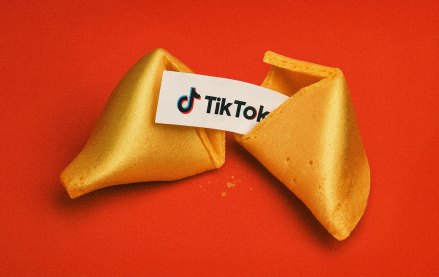Save 50% on a 3-month Digiday+ membership. Ends Dec 5.
A brand safety watchdog wants to galvanize ad tech vendors to save publishers from MFA classification

Publishers affiliated with the trade organization the Brand Safety Institute (BSI) are lobbying leading measurement firms to better help them understand how such platforms flag MFA content, Digiday has learned.
If successful, they aim to launch a “publisher portal” to help cash-strapped media owners better understand how not to fall foul of vendors such as DoubleVerify and Integral Ad Science, with involved parties asking for direct input to the operation.
The parties involved favor such an approach over fears that existing guidelines on how best to avoid MFA websites published by advertising authorities are now being “gamed” by fraudsters while also penalizing legitimate publishers.
The term “MFA” — a.k.a. “made-for-advertising” or “made-for-arbitrage” content — is now one of the bogey phrases of the digital media landscape following a report suggesting that “made-for-advertising websites” cost marketers as much as $10 billion per year.
The June 20023 “First Look Report” by the Association of National Advertisers represented the trade body’s drawn-out audit of the programmatic ecosystem — a sector of the media industry that still has to shed its reputation for shady tactics among many marketers — in a bid to help marketers better manage their media budgets.
However, the lack of a consensus on the exact nature of the problem has complicated the issue; for example, some believe there is a key point of differentiation between “made for advertising” and “made for arbitrage” websites.
Meanwhile, after fellow trade body the 4A’s issued guidelines on evaluating MFA content to media agencies last year, certain publishers noticed an overlap between the practices red-flagged by the trade body and their own day-to-day practices.
Scalpel or sledgehammer approach?
However, the 4A’s recommendations were far off an industry standard for MFA, meaning many on the buy side of the industry are pondering whether to adopt “the sledgehammer or the scalpel approach” to the issue.
Most buyers are still refining tactics in a bid to allay the concerns of their procurement departments, many of whom will have been alarmed by the multitude of headlines generated since last year’s ANA report, such as Adalytics’ March missive that highlighted the vulnerabilities of retail media.
In March, AdExchanger reported that the 4A’s held regular meetings with concerned entities, such as key actors in the space Jounce Media and DeepSee.io, after it issued guidance on tackling MFA websites in September.
However, the talks lacked participation from a crucial ad tech constituency: measurement vendors, i.e., companies that make key calls in the debate and are often blamed for blocking crucial revenue to publishers.
But that’s not to say measurement or verification companies have been idle over the past year. The two leaders in the space (DoubleVerify and Integral Ad Science) are apparently buoyed by such concerns, both announcing related product launches in Q1 this year.
The former made much of its AI investments, claiming they allow for more nuanced MFA content monitoring, while the latter similarly claimed to help clients optimize against both MFA and ad clutter sites.
While the last 12 months have been seemingly positive for the buy side of the industry, they mean (yet more) woe for cash-strapped publishers, some of whom attempt to maintain editorial standards but can be flagged as MFA by such systems.
Jounce Media’s Chris Kane explained how complications can often rear their heads earlier in the year. “When we find certain publishers who are reputable publishers and produce high-quality content and have organic visitors, but whose supply is presented to the demand side [platforms] as overwhelmingly really, really low quality,” he told Digiday in March.
However, Digiday has since learned BSI’s efforts on behalf of its Publisher Council—a body understood to represent the interests of outfits such as NBCUniversal, CBS, Bloomberg, NewsCorp, plus a host of regional publishers—are starting to pick up steam.
Neal Thurman, a co-founder of the BSI and director at the Coalition for Better Ads, told Digiday that while many publishers welcome advertisers’ increased attention to programmatic wastage, there is a dissonance between the two sides of the industry.
“It wasn’t exactly clear to them how one got categorized as an MFA, and as such, their next concern was, ‘Am I going to get bucketed in with these people, and if I do, how will I find out?'” he said, adding that concerns were further heightened after the 4A’s released its guidance in September.
“Well-intended publishers looked at the categories [identified by the 4A’s] and said, ‘This is all correct but insufficient for us to act on,'” Thurman went on to state that publishers requested more specificity over definitions such as rapidly auto-refreshing ad placements, etc.
“[The 4A’s publication] was a great way of helping to describe MFA, but the problem was legitimate publishers practice some of those descriptions,” added Scott Cunningham, chair of the BSI’s Publisher Council and initiative lead at NewsPassID. “We’re all just trying to get on the same page.”
Cunningham, who was also the founder of IAB Tech Lab, further explained how the MFA recommendations made by the 4A’s apply to most publishers as many refresh ad units on their web pages during a single user session or host syndicated content. Hence, he engaged in contact with the buy-side trade org.
Measurement firms are now leaning in
Meanwhile, Digiday has learned that parties, including the BSI’s Publisher Council, Jounce Media, and DeepSee.io, have now initiated contact with leading measurement providers DoubleVerify, IAS, and Pixalate with the hope of launching a “publisher portal” to help concerned parties address their lack of visibility.
Through such outreach, firms such as IAS can feed insights into a portal—advocates proposed BSI will administer this to alleviate concerns over commercial sensitivities—whereby publishers can better understand how such platforms classify their web domains.
“Publishers have no idea how they’re being classified, and most times, they just don’t know why,” said Cunningham. “There’s no signal in OpenRTB that says [to publishers] that they’ve been blocked… we’d love the verification vendors who have products in market for MFA-detection to participate.”
IAS’ head of fraud protection, Scott Pierce, confirmed his company was participating in the process of discussing details over the platform—participants hope to have a proof-of-concept ready by the close of the year.
“We just have some questions about how their transparency portal is going to work… I have some questions around how they’re going to protect the data because it is intellectual property,” added Pierce, explaining how IAS was seeking reassurances over how data will be siloed, and publishers accessing the portal will be vetted.
Rocky Moss, CEO of DeepSee.io, told Digiday that conversations currently center around how granular the feedback the portal could, or should, be able to give participating publishers. “We don’t want to push everyone that’s coming to the table, particularly the legacy fraud-detection vendors who’ve not done something like this before and will likely be a little cagey about doing so,” he said.
Meanwhile, Jounce Media CEO Chris Kane characterized the proposed BSI-administered portal as “a trusted custodian” that can guide publishers responsibly, noting some players felt previously published MFA guidelines were being abused.
“We realized the documents were not being used by brands and agencies… It was being used by publishers who were trying to figure out how close to the line they can get without being called ‘made for advertising,'” he told Digiday.
“We should not give publishers the formula or the exact boundaries of MFA. Instead, we should just be giving them visibility into whether companies like Jounce are guiding buyers to block their supply.”
Spokespeople for DoubleVerify and Pixalate did not respond to Digiday’s request for comment on record by press time.
More in Media

TikTok Shop sheds bargain-bin reputation as average prices climb across categories
An analysis by e-commerce intelligence firm Charm shows average prices climbing across more than a dozen key categories.

Ad Tech Briefing: The Programmatic Governance Council is a bid to reset power dynamics
As tensions over TID and GPID peak, Tech Lab is convening a council to hash out commercial ground rules.

Newsweek is building an AI Mode-like experience to customize homepages for readers
Newsweek is building an AI homepage modeled after Google’s AI Mode to increase engagement and offset declining search referrals.










